Kachina Doll (Kokopol) Item Number: 04.297.5575 from the Brooklyn Museum
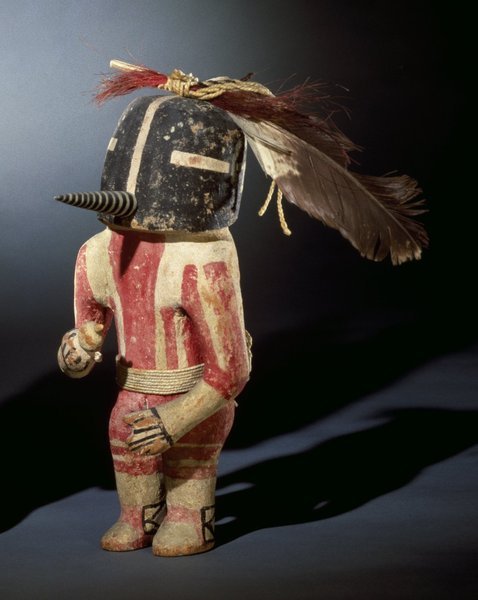
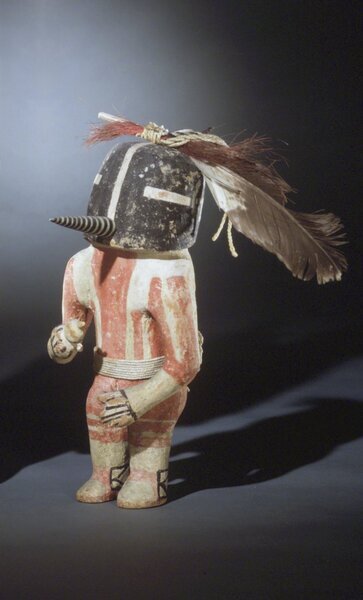
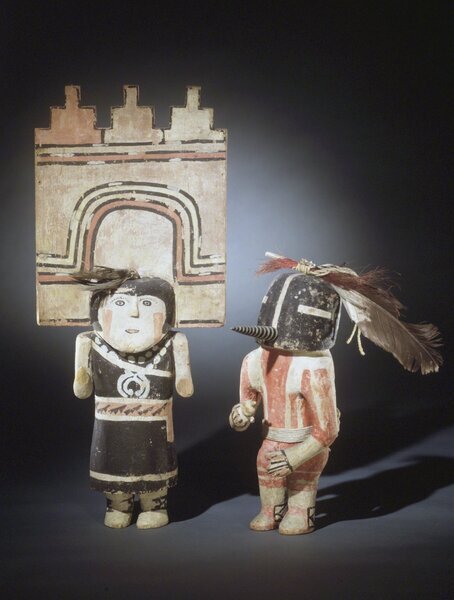

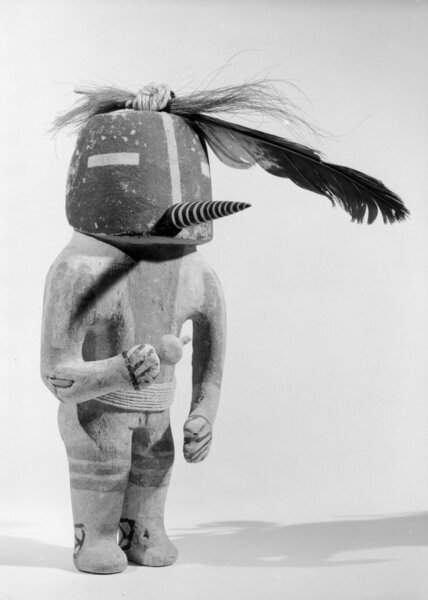

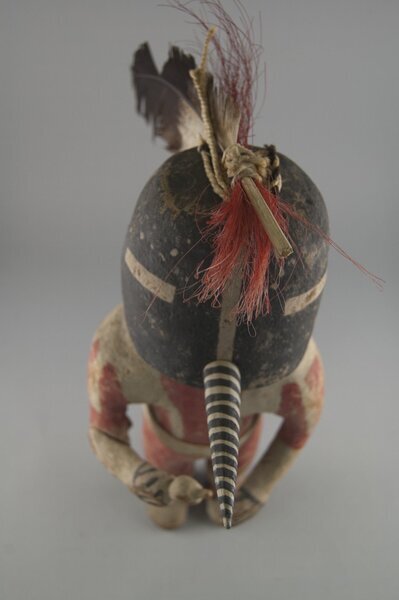
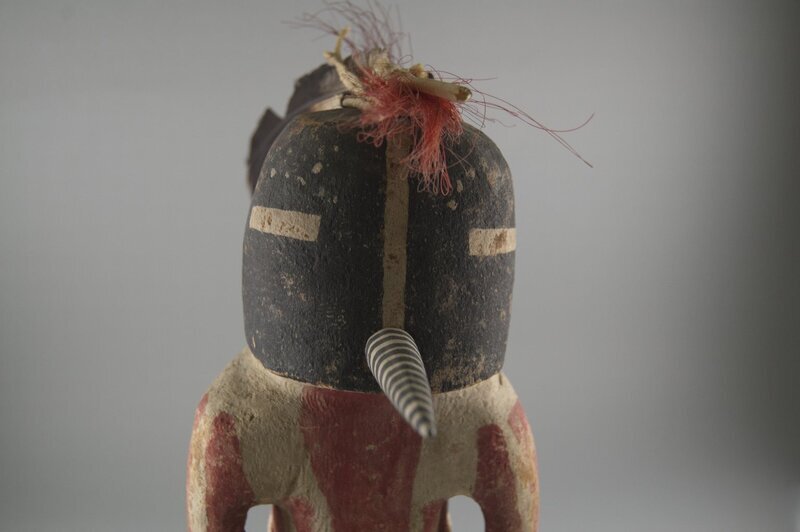

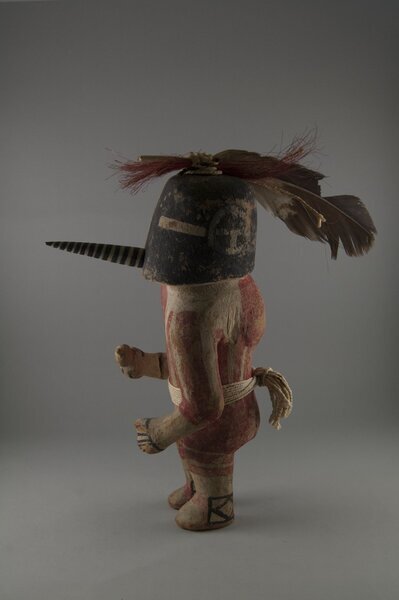
Description
Male kachina doll , Kokopelli, with horsehair and large feather attached to top of head. Face is black with white horizontal stripes for eyes. A similar vertical stripe bisects face. Nose is cone-shaped and painted with pattern of horizontal stripes. Body decorated in red and light green. Belt is wide and made of white cotton twine. Right hand holds rattle. Back carved as a hunchback. Surface wear.
Credit Line
Museum Expedition 1904, Museum Collection Fund
Label
Kokopelli is one of several spiritual beings, identified as Kachinas, who live among the Hopi during a six-month religious cycle each year. Depicted with a humpback full of seeds and normally unclothed, Kokopelli represents fertility for all life forms. In the Hopi tradition, men become these spirits by donning the specific Kachina religious paraphernalia. While performing rituals and dances, these spiritual Kachinas may give Kachina dolls to women, girls, and young boys in order to include them in the ceremonies, protect them, and assist their learning the Hopi religion.
Item History
- Made between 1875 and 1899
What
Who
- Culture
- Hopi Pueblo
Where
- Holding Institution
- Brooklyn Museum
When
- Creation Date
- between 1875 and 1899
Other
- Classification
- Sculpture